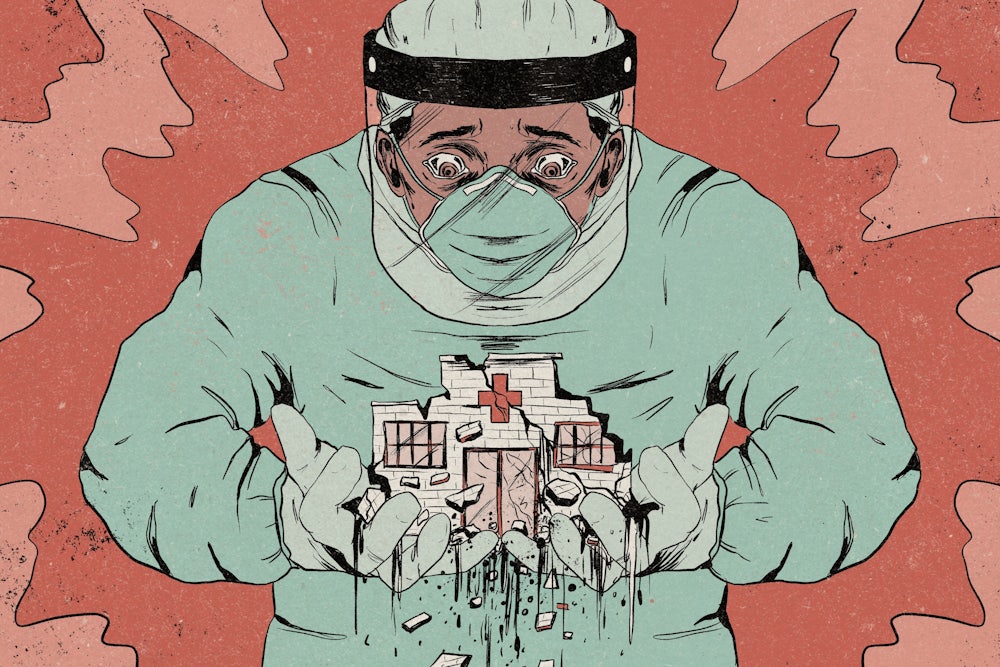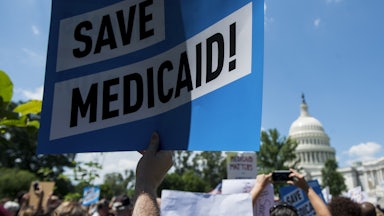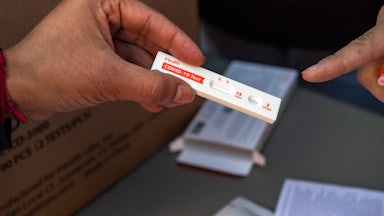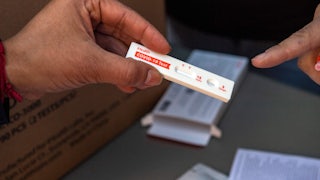Two years ago, as Joe Biden’s campaign pulled far ahead in the presidential primary and the United States settled into a lockdown to slow the spread of the novel coronavirus, I felt fairly certain about one thing: The global pandemic we were about to live through would surely make a powerful case for Medicare for All. Early reports had begun rolling in about mass layoffs, which seemed poised to drive up the rate of uninsurance from the already high baseline of around 30 million people. Pricey hospital care would be financially ruinous for untold numbers of patients, and others might avoid care for fear of costs. Meanwhile people shut out of the health care system might struggle to get tests, and so on.
Here’s what I got wrong: The coronavirus did not inspire a massive wave of pro–Medicare for All sentiment, largely because the federal government took several unprecedented steps to mitigate the pandemic, which briefly made our health care system more humane—provisions that notably have either mostly ended or are on the verge of ending soon. But Covid-19 nonetheless found plenty of ways to illustrate the dysfunctions of the U.S. health care system, and the downside of the extreme measures that were briefly undertaken to save lives is that depressingly little seems poised to change, despite all of these lessons learned.
In the pandemic’s early days, several private insurers voluntarily waived cost-sharing for Covid-19 treatment where it wasn’t already mandated at the state level, and the federal government stepped in to avert a massive increase in uninsurance. It took the shocking step of covering 100 percent of COBRA subsidies to keep people on their plans after being laid off and barred states from kicking people out of Medicaid for the duration of the official public health crisis. The impact of these measures was significant: Despite gloomy projections, including my own, while over 12 million people were estimated to have lost their insurance, nearly all made their way onto alternate coverage.
As I argued previously, the fact that the crisis was avoided through billions of dollars of crisis-inspired subsidies somewhat complicates the common argument that the Affordable Care Act successfully weathered the pandemic. Even so, the loosening of Medicaid restrictions is set to expire in the coming months, which could elbow up to 15 million people out of the program. Private insurers are no longer waiving cost-sharing, and COBRA payments are once again the responsibility of individuals. In short, any future havoc wrought by Covid-19 and its future variants is likely to happen without those crucial supports.
Well before the coronavirus arrived in the U.S., our health care system contributed toward poorer health outcomes than peer nations’, leaving our population sicker and more vulnerable to a new virus—particularly in combination with stark inequality. The U.S. has higher rates of chronic comorbidities like diabetes and heart disease that are exacerbated by inadequate management and increase the probability of developing severe Covid-19; one study found that some 18 million people in high-risk categories in 2018 were either uninsured or underinsured. (Full disclosure: My husband was a co-author.) The U.S. also had a higher rate of treatable and preventable deaths that could have been averted with health care than every major country in Europe, Japan, and Australia, every year since 2000.
Our health care system’s flawed designs have shaped the geographic availability of Covid-19 treatment: Because health services distribution is mediated by profit interests rather than health needs, intensive care units were overwhelmed in poorer and sicker neighborhoods and comparatively peaceful in wealthy ones. And since different health systems operate independently, with no genuine incentive to coordinate or centrally manage patient flow, it wasn’t anyone’s job to figure out where an ICU bed was available and when—physicians mostly had no choice but to do this themselves, and patients suffered or died in the interim.
Meanwhile, the vaccination campaign appears to have been significantly marred by the U.S. health care system. For much of 2021, uninsured people were more likely to be unvaccinated than any given group; they’re still around twice as likely to be unvaccinated as people with health coverage. And even though the government moved to make vaccines free at the point of use, many people reported being skeptical that could possibly be true—suggesting that ingrained habits like avoiding engagement with health care for fear of costs could have undermined response efforts.
There’s also the fact that up to 25 percent of Americans have no primary care provider. One survey showed that 53 percent of unvaccinated people would be more willing to get the jab from their own doctor; another suggested that PCPs were the most trusted source of vaccine information. Yet another study showed that counties with more primary care providers had higher rates of vaccination than those with otherwise similar demographic profiles. The VA’s publicly provisioned health care system boasted a far higher vaccination rate than expected for its patient population.
Patchy primary care also bodes poorly for connecting patients with treatment: White and insured people have accessed monoclonal antibodies at far higher rates than the uninsured and people of color. Antiviral medications that can sharply reduce the likelihood of progression to severe disease must be administered within five days of symptom onset, an onerous demand on a patient that is made infinitely easier with the help of a trusted practitioner.
All of this is to say that at various points throughout the pandemic, the U.S. health care system made things more painful than they had to be. The only reason things didn’t go even worse was a once-in-a-lifetime government intervention to prop up the ACA long enough to avoid the damage and tragedy that would have been inevitable otherwise.
Ultimately, it says a lot that at a moment of societal emergency, when effective health care delivery ostensibly mattered most, elected officials opted unabashedly for the very things their leftward flank has been calling for all along: relief from high premiums, protection against getting kicked off Medicaid, and free vaccines regardless of insurance status. If such measures are considered necessary when it comes to Covid-19, it’s not clear why they shouldn’t be otherwise. The pandemic made it crushingly obvious that direct public provision and extensive public support were necessary to respond effectively to emergencies. If our health care system wasn’t good enough to get us through a pandemic, why are we relegated to it now?










